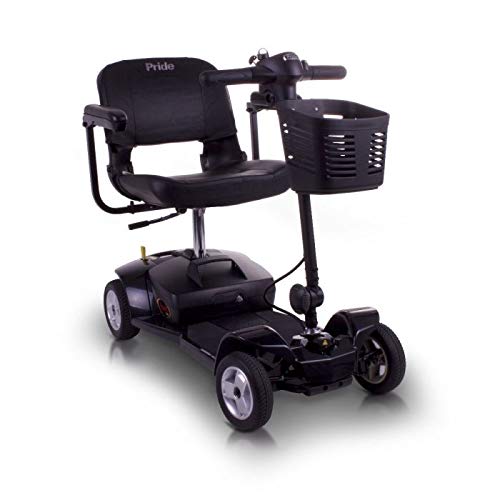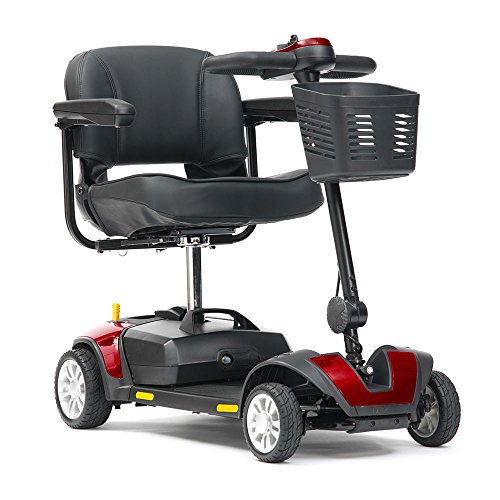 Mobility Scooter Road Or Pavement
Mobility Scooter Road Or Pavement Mobility scooters can be used on pavements provided they are used in accordance with the law. However, they are not used on bus or motorway lanes.
Mobility scooters can be used on pavements provided they are used in accordance with the law. However, they are not used on bus or motorway lanes.Like any vehicle, users are required to obey traffic laws and follow pedestrian traffic signals. Safety is the most important thing, which is why users are advised to wear a helmet and make sure that their scooters are equipped with adequate lighting to ensure visibility.
Sidewalks and Pedestrian Walkways
Many cities, towns and states have their own rules regarding mobility scooters that are used on pedestrian pathways. These laws are designed to protect pedestrians from drivers who don't pay attention to their surroundings or speed too fast. These laws encourage people to use scooters with care and with caution, while also showing respect for other users in public spaces.
On sidewalks, the maximum speed of scooters is generally set to match the speed of pedestrians who are walking through a particular area. The reason is that people who are elderly or disabled walk at a slower speed than those who are young and healthy. Someone who is driving their scooter at a rapid speed will likely injure or even cause death to an older person if they crash into them.
In certain areas scooters aren't permitted to being used on sidewalks, and users are being required to use bike lanes or the main road. The roads are designed to accommodate motorized vehicles, while sidewalks are not designed to accommodate them. A person who rides a motorized scooter on sidewalks is not shielded from weather or traffic.
This can make people feel unsafe as it requires them to change their routes. This is particularly true for seniors who use their scooters as their primary mode of transportation. The need to travel on different routes can be extremely frustrating for them and could cause them to abandon their scooters completely, reducing their independence.
If you are worried about the best way to use your mobility scooter in urban areas, it's best to contact your local municipal government or homeowner's association (HOA) to learn more about the specific guidelines for operating these devices in your community. In some cases there may be certain requirements such as using reflective materials or lighting and ensuring that you're visible to pedestrians in low-light or nighttime conditions. Moreover, they might recommend that you park your scooter in designated parking spaces and avoid blocking walkways and intersections. They might also insist that you wear safety gear such as reflectors and helmets in order to prevent accidents.
Roadways
Municipalities have rules regarding the use of mobility scooters on roadways to help keep people safe and prevent accidents. It may be uncomfortable for users of mobility scooters to learn that they are not allowed on roads, but it is for their own security. Mobility scooters are designed to be used on sidewalks and pedestrian walkways which means that they are unable to handle the speed and traffic roads can bring. This can lead to congestion and slow down traffic flow, which is dangerous for both mobility and other vehicles.
To be able to travel on roads, a scooter must be class 3 or higher. This means it can travel at an maximum speed of 8 mph and is equipped with efficient brakes and lights, as well as rear view mirrors and an alarm. If a scooter doesn't meet these standards it's prohibited from operating on roads.
However there are some scooters that can be driven on roads at speeds up to 4 mph mobility scooter mph. This is not recommended. This speed could make the scooter unstable and difficult to manage. It's also important to keep in mind that the rider must be taught how to handle the scooter on a road prior to trying this.
The most important aspect of riding a scooter on the road is that the operator must put the safety of others first. This includes cyclists and pedestrians as well as other road users. It is crucial to keep a speed in tune with the conditions around you and foot traffic. Always wear a helmet to increase visibility and protection.
Mobility scooters are an essential part of many people's lives, but it's essential to be aware of the laws and regulations that govern their use. In addition to the state and municipality-specific laws, local communities might have their own ordinances regulating the use of scooters. This is particularly applicable if you live in a neighborhood that has homeowner's associations that may have their own restrictions on the use of scooters. Check out the rules in your area to avoid fines and penalties.
Grasslands
It may seem appealing to drive a mobility scooter on grass, but it's not the ideal surface for this vehicle. Grasslands are usually covered with gravel, stones and hard rocks that could cause damage or be stuck. Additionally, the ground may be wet and muddy from rain or even water. These conditions are bad for scooters since they have low ground clearance. Driving over them could make the scooter uncontrollable or even unstable.
If you are thinking of using your scooter on outdoor surfaces that are not asphalted, then you have to purchase an all-terrain model. These kinds of models are made for those who want to be able to travel over a variety of surfaces, including grass. These models are equipped with larger wheels and more powerful motors that are able to handle the rough terrain. This gives individuals who are unable to walk to take advantage of a variety of outdoor activities, broadening their options and allowing them to be more independent.
If you're interested in this type, you should visit a shop or showroom that specializes in mobility scooters. They will be able to show you the different surfaces they're designed for. This is the best method to learn how a scooter functions on various outdoor surfaces, such as grass and the limitations it has.
You should only use a class 3 scooter when on the road. Other types of scooters should be kept off the road and only used when crossing roads. The documentation or the retailer that comes with your scooter ought to provide you with a basic guidelines on what outdoor surfaces are suitable for this type of mobility scooter, however this varies from country to country.
You can continue to enjoy your favorite activities with the appropriate mobility scooter. For example you can go to an event or spend time with your children. You can also take your dog for a walk. You can also visit the county grounds to watch a cricket game or an annual fair.
Rough Terrains
If you frequently go on outdoor excursions, or you reside in an area that has rough terrain, a mobility scooter designed for dirt or gravel trails can be an essential tool. These special power-scooters are fitted with larger motors and tires for greater stability and comfort on difficult surfaces. They also have advanced suspension systems that to absorb the impact of bumps and inclines. These tough models allow you to easily navigate through obstacles and ride on sandy terrain.
Some mobility scooters are able to be used on grass, however long-term use could damage the vehicle. A decision to purchase an all-terrain scooter with air-filled tires that are large and a high-end suspension system will allow you to enjoy all the outdoor activities you love without worrying about causing damage to your mobility scooter. They aren't transportable or foldable, which means they will take up more space in storage than indoor models.
Rough terrain scooters can be driven on various surfaces, including gravel, grass, dirt and sand. They also have larger front and rear tires to provide the best traction and stability. In addition, the sophisticated suspension system reduces vibration and discomfort. These scooters are capable of traveling that can reach 30 miles per charge. They are ideal for running around town or for long journeys.
You can easily change the direction of your scooter's speed or motion by shifting your weight. Leaning forward can increase traction, whereas leaning backward improves stability when you are climbing or going down. It is also possible to navigate corners by leaning your body and the scooter into turns.
Consider your lifestyle and needs before purchasing a scooter for rough terrain. Evaluate how often you will be using the vehicle and what types of terrain you generally travel on. Compare features and brands in order to find the vehicle that best fits your budget and lifestyle.
Raphael is a well-known mobility scooter expert and offers valuable insights on various models and features to help customers make an informed decision when buying. He gives his customers precise and clear information to make the buying process as easy as it can be.
